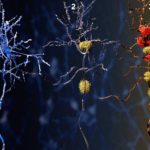The cochlea, the auditory sensory apparatus of mammals, is the organ in which the first step in sound perception occurs, the detection of a complex incident sound and its decomposition into its fundamental and harmonic frequencies. This frequency analysis (often still referred to as a “spectral analysis”) is based on both the spatial organization and very unusual biophysical properties of the mechanosensitive cells comprising the cochlear epithelium, the organ of Corti. Each position along the length of the mature cochlea is adjusted, anatomically, mechanically and physiologically, so as to allow about ten sensory cells (from several thousand) to respond to a particular sound frequency, known as the “characteristic frequency”. Our aim is to use a multiscale approach to characterize the cellular and molecular mechanisms that shape the cochlea, during the first stages of development, into a spatially distributed frequency analyzer. The deciphering of these mechanisms is of major interest both in terms of fundamental research and in terms of potential medical applications.
The team is thus working on two complementary research projects aiming to decipher the cellular and molecular mechanisms underlying the development of the organ of Corti, and using stem cells to generate inner ear organoids reproducing the spatial organization of the cochlea in vivo or in culture. These organoids will be a very promising tool for the development of auditory therapies, as they make it possible to model certain hearing problems in a personalized manner at low cost.
Projects
Characterization of the cellular and molecular mechanisms underlying the establishment of the spatial organization of the auditory organ
During embryonic development, the cochlear epithelium triples in length over a period of four days and acquires a mosaic organization in which the auditory sensory cells are intercalated between the support cells to form precisely aligned rows. The molecular mechanisms underlying the establishment of these cellular rearrangements remain poorly understood. The team has developed an integrative approach combining the use of genetic tools with multiscale microscopy, bioinformatics and artificial intelligence methods, to identify the genes and signaling pathways involved in this process. In particular, the researchers of this team are developing a spatial transcriptomics method to make it possible to correlate the expression of genes with changes in the shape of the cells. This method is based on a set of DNA barcodes identifying, in a unique manner, each position along the length of the cochlear epithelium. In this context, the team has, notably, developed a bioinformatics tool for selecting DNA barcodes robust to sequence reading errors. With this goal in mind, the scientists have used concepts from information theory to develop a new algorithm for optimizing the choice of DNA barcodes. This source code has recently been rendered public (10.18129/B9.bioc.DNABarcodeCompatibility) in the Bioconductor online repository, and a web interface has been created for the use of this tool (https://dnabarcodecompatibility.pasteur.fr).
Organoid-on-chip: control of the spatial organization of inner ear organoids
The aim of this project is to generate inner ear organoids that reproduce, in vitro, the first steps in the formation of the cochlear epithelium. More precisely, the objective is to generate inner ear organoids in a microenvironment in which it is possible to control the spatial distribution of diffusible biochemical factors, such as morphogens, which play an essential role in establishing the axes of the cochlear epithelium. To this end, the researchers will combine the use of advanced microfluidic tools with high-throughput imaging to induce the differentiation and organization of embryonic stem cells into cochlear organoids. This interdisciplinary work is currently being performed in partnership with the Biomaterials and Microfluidics platform of Institut Pasteur, Institut Pasteur de Corée (the Pasteur Institute of South Korea) and the National University of South Korea in Seoul.







